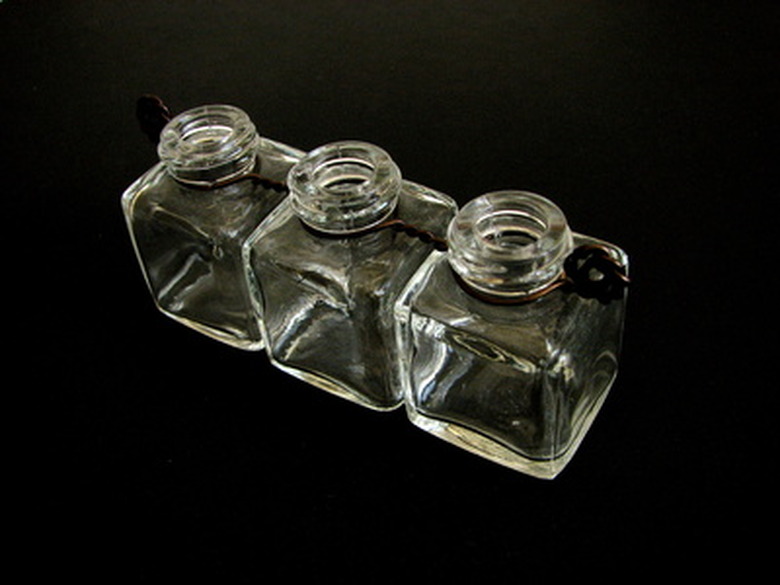Glass & Pitch Science Projects
Sound is simply defined as vibrations of air. The faster the vibrations, the higher the pitch. The slower the vibrations, the lower the pitch. To help students hear and understand the differences in pitch, a variety of experiments can be done using various types of glasses and water.
Bottle Music
Bottle Music
Give students four empty glass soda or water bottles. Fill each bottle to the top with water. Remove 100 ml of water from the first bottle, 200 ml from the second, 300 ml from the third and 400 ml from the fourth. Have students tap the side of each bottle with a metal spoon. The sound made when the spoon taps the bottle should change depending on the amount of water in each bottle. Students should record their observations in a notebook and note the difference in the sounds.
To make the experiment more interesting, students can add more bottles, giving each a different amount of water, and once they discover the sound each makes, they play a simple song such as "Twinkle, Twinkle" by tapping their spoon on the bottles.
Blowing on Bottles
Blowing on Bottles
In this experiment, students take three glass bottles and fill them with different amounts of water (one 1/4 full, one 1/2 full, and one 3/4 full). Students then put their mouth right at the edge of the bottle and blow across the top of it to see what sound is produced. Students can make a chart to record the amount of water in the bottle and the type of sound produced. A chromatic tuner can also be used to determine which musical note the bottle makes.
Wine Glass Music
Wine Glass Music
Students can make music with wine glasses by filling four or five wine glasses with different amounts of water. Have students wet their finger and gently rub it around the edge of each glass. The glasses should produce an eerie-sounding note at varying pitches, depending on the amount of water in the glass. Explain to students that rubbing their finger around the edge of the glass causes it to vibrate and produce sound. The amount of water in the glass determines the frequency of the vibrations, or the pitch.
Glass Bottle Pan Flute
Glass Bottle Pan Flute
Fill five glass bottles with different amounts of water. Arrange them so that the sound each bottle makes when the top is blown across goes from lowest pitch to highest pitch. Then duct tape the bottles together. The duct taped bottles can then be played like a pan flute. Plastic bottles can be substituted to glass bottles to avoid breaking if dropped.
Musical Glasses
Musical Glasses
Create a C-scale by lining up eight empty 8-oz. glasses. The first glass should be completely full (low C). The next glass should be 8/9 full (D note), the third 4/5 full (E note), the fourth 3/4 full (F note), the fifth 2/3 full (G note), the sixth 3/5 full (A note), the seventh 8/15 full (B note) and the eighth 1/2 full (high C note).
To test their glasses, give students a simple piece of sheet music, such as "Mary Had a Little Lamb" and see if they can play it on their musical glasses.
Cite This Article
MLA
Zeiger, Stacy. "Glass & Pitch Science Projects" sciencing.com, https://www.sciencing.com/glass-pitch-science-projects-6136701/. 24 April 2017.
APA
Zeiger, Stacy. (2017, April 24). Glass & Pitch Science Projects. sciencing.com. Retrieved from https://www.sciencing.com/glass-pitch-science-projects-6136701/
Chicago
Zeiger, Stacy. Glass & Pitch Science Projects last modified August 30, 2022. https://www.sciencing.com/glass-pitch-science-projects-6136701/
